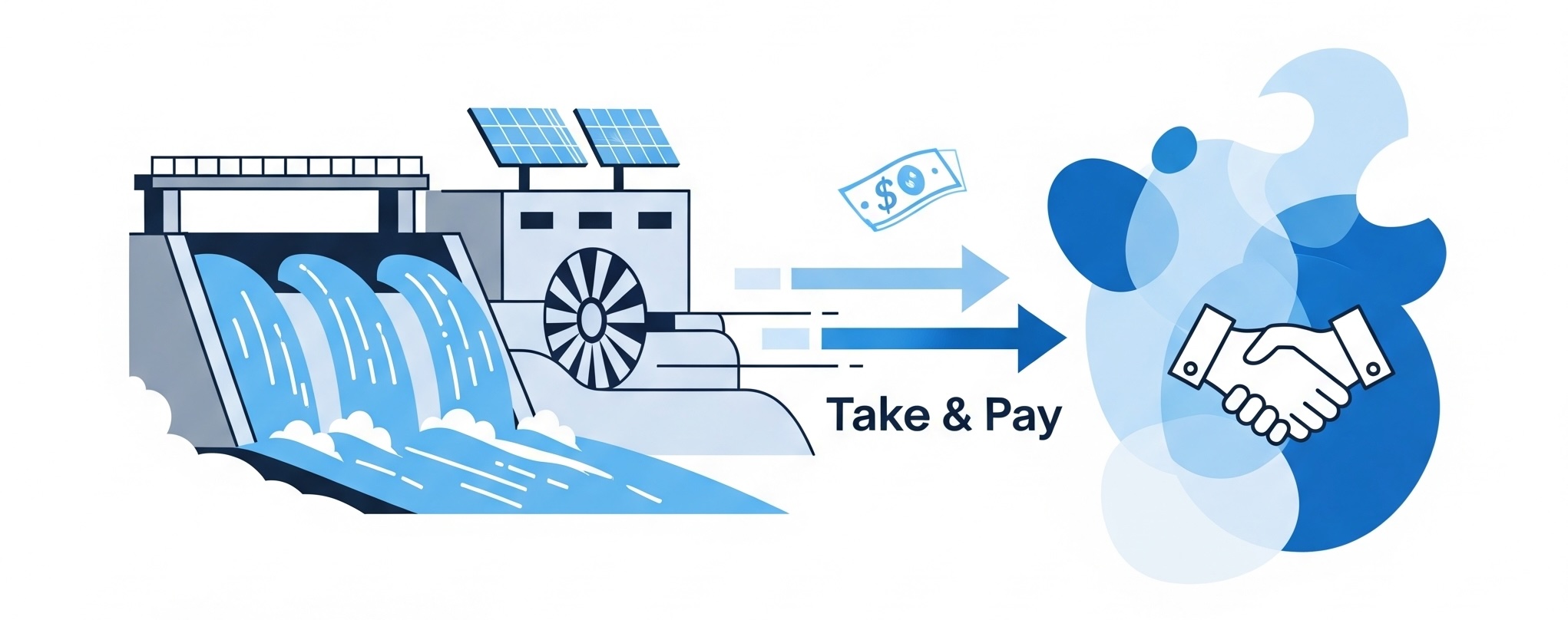Nepal's Energy Crossroads: Decoding the Take-and-Pay Policy in the New Budget
By Economics Nepal ·

**A controversial policy shift in Nepal's latest budget has sent shockwaves through its burgeoning energy sector. The government has reintroduced a "Take-and-Pay" model for purchasing electricity from private producers, a move that alters the risk landscape for massive hydropower investments and pits the goal of fiscal prudence against the need for investor security.**
### The Prevailing Model: "Take-or-Pay"
Prior to the recent budget announcement, Nepal's electricity procurement from Independent Power Producers (IPPs) was predominantly governed by the "Take-or-Pay" (ToP) model. Under this arrangement, the state-owned Nepal Electricity Authority (NEA), the sole buyer of grid-connected electricity, was obligated to pay power producers for a pre-agreed amount of generating capacity. This payment was guaranteed regardless of whether the NEA actually used or "took" the energy produced.
This ToP model provided a predictable revenue stream for producers, which was critical for securing financing for capital-intensive hydropower projects. This framework is widely credited with attracting the private investment necessary to end Nepal's chronic power cuts and transform the nation into a seasonal electricity exporter. In essence, the ToP model placed the market risk—the danger of demand being lower than supply—on the NEA, while the producer bore the performance risk of failing to generate power.
### The New Policy: "Take-and-Pay"
The "Take-and-Pay" (TnP) model, reintroduced in the budget for the fiscal year 2025/26, fundamentally alters this dynamic. Under a TnP contract, the NEA will only pay for the electricity it actually takes and consumes. If, for any reason such as low demand or transmission congestion, the NEA does not purchase the power, it has no obligation to pay the producer. This policy specifically targets new Run-of-River (RoR) hydropower projects, which are the backbone of Nepal's current generation fleet. The TnP model shifts the entire market and demand risk from the state utility onto the private power producers.
### What the Budget Says
The budget statement for the fiscal year 2082/83 (2025/26 AD) contains a specific clause that marks this policy shift. Point 227 of the budget, presented by Finance Minister Bishnu Prasad Paudel, states:
> "A policy will be adopted to sign power purchase agreements to maintain a balance between electricity production and consumption. Power purchase agreements will be made according to the take and pay concept of run-of-river projects."
This single sentence formalizes the move away from the long-standing ToP framework for new RoR projects.
### Key Differences: Take-or-Pay vs. Take-and-Pay
The core distinction between the two models lies in the allocation of risk, which has significant implications for project financing and investment.
| Parameter | Take-or-Pay (ToP) | Take-and-Pay (TnP) |
| :--- | :--- | :--- |
| **Definition** | Buyer pays for the agreed capacity, whether the energy is taken or not. | Buyer pays only for the energy that is actually taken and consumed. |
| **Risk Allocation (Demand Risk)** | Borne by the Buyer (NEA). | Borne by the Producer (IPP). |
| **Revenue Certainty for Producer** | High. Provides a guaranteed, predictable revenue stream. | Low. Revenue is uncertain and depends entirely on the buyer's offtake decisions. |
| **Impact on Project Bankability** | High. The revenue guarantee makes projects "bankable" and attractive to lenders. | Very Low. Lack of revenue certainty makes projects "un-bankable" for lenders. |
| **Flexibility for Buyer (NEA)** | Low. Obligated to pay for capacity even if not needed. | High. Can adjust purchases based on real-time demand, avoiding costs for surplus power. |
| **Suitability for Nepal's Monopsony Market** | Considered essential by the private sector to mitigate the risk of a single buyer. | Considered unworkable by the private sector due to the lack of alternative buyers. |
---
### Pros and Cons of the "Take-and-Pay" Mechanism
The introduction of the TnP policy has elicited strong reactions, with the government and private sector presenting starkly different views on its merits and drawbacks.
#### The Government's Rationale (Pros)
The government, particularly the Ministry of Finance, defends the TnP policy on several grounds:
* **Fiscal Prudence for NEA:** The primary argument is to shield the NEA from financial losses. As generation capacity grows, particularly during the wet season, the risk of "electricity spillage"—surplus energy that cannot be used or exported—increases. Under ToP, NEA must pay for this wasted energy, creating a financial drain. TnP insulates the utility's finances from these costs.
* **Balancing the Grid:** The policy is framed as a technical tool to "align electricity production with actual consumption". Given the dominance of RoR projects, which have fluctuating output, TnP gives the NEA the flexibility to purchase only the power the grid can safely absorb, preventing instability.
* **A Bridge to a Liberalized Market:** Officials argue TnP is an "interim arrangement". They contend that a forthcoming Electricity Bill will end the NEA's monopsony and allow IPPs to sell power directly to other consumers or export it. In such a competitive market, they argue, TnP is a logical model as producers would have alternative buyers.
#### The Private Sector's Concerns (Cons)
Independent power producers and financial institutions view the TnP policy as a significant threat to the sector's growth:
* **Makes Projects Un-bankable:** The most critical consequence is the impact on project finance. Lenders require the revenue certainty provided by ToP agreements to finance multi-billion rupee hydropower projects. The revenue uncertainty of the TnP model makes projects "un-bankable," as banks are unwilling to lend for projects whose income is not guaranteed.
* **Jeopardizes Investment and the Economy:** The policy places a pipeline of over 350 hydropower projects with a collective capacity of more than 17,000 MW at risk. A halt in construction could lead to widespread job losses, impact ancillary industries like cement and steel, and reduce government revenue from taxes and royalties.
* **Contradicts National Goals:** The TnP policy directly undermines the government's own strategic targets, including the "Energy Development Roadmap 2081," which aims for 28,500 MW by 2035, and the commitment to export 10,000 MW to India.
### The Financial Stakes
The debate is underlined by significant financial considerations, from the cost of wasted energy to the potential for forgone export revenues.
**Electricity Spillage**
Recent data highlights the growing cost of surplus energy that the TnP policy seeks to mitigate.
| Period/Event | Spillage Amount (MW/GWh) | Estimated Financial Loss (NPR) |
| :--- | :--- | :--- |
| **Dashain Festival 2022 (1 week)** | Up to 800 MW; 40 GWh | ~200 Million |
| **July 2023 (Night-time)** | Average 70 MW | Not Quantified |
| **FY 2022/23 (Projected Surplus)** | 3,036 GWh | Not Quantified (dependent on market price) |
**NEA's Financials & Export Earnings**
While the government aims to protect the NEA's finances, the utility has been profitable, reporting sales revenue of approximately NPR 115.5 billion for FY 2023/24. The counterargument to the TnP policy is the massive opportunity cost of forgone export revenues. In the latter half of 2022 alone, Nepal earned over NPR 11 billion from selling surplus power to India, a figure that could grow substantially with increased generation. The policy, by potentially stalling development, risks these future earnings for short-term savings.
Share this article:
Published by Economics Nepal
© 2024 All rights reserved
